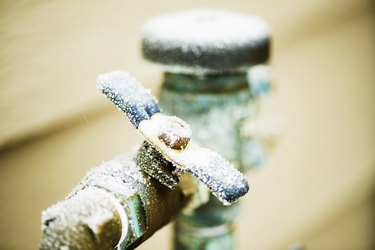Important Advice to Prevent Frozen Plumbing in Winter: Expert Insights
Important Advice to Prevent Frozen Plumbing in Winter: Expert Insights
Blog Article
Any individual may have their own opinion when it comes to How to prepare your home plumbing for winter weather.

Winter can damage your plumbing, specifically by freezing pipelines. Right here's just how to stop it from taking place and what to do if it does.
Introduction
As temperatures drop, the threat of frozen pipelines boosts, possibly resulting in expensive repair work and water damages. Recognizing exactly how to avoid frozen pipelines is vital for homeowners in chilly climates.
Prevention Tips
Insulating vulnerable pipes
Wrap pipelines in insulation sleeves or utilize warm tape to secure them from freezing temperatures. Concentrate on pipes in unheated or external areas of the home.
Home heating methods
Keep indoor areas effectively heated up, specifically locations with plumbing. Open up closet doors to permit cozy air to distribute around pipelines under sinks.
How to recognize icy pipelines
Seek reduced water circulation from faucets, uncommon odors or noises from pipes, and noticeable frost on subjected pipelines.
Long-Term Solutions
Structural changes
Take into consideration rerouting pipelines far from exterior wall surfaces or unheated areas. Include added insulation to attics, cellars, and crawl spaces.
Upgrading insulation
Invest in top quality insulation for pipes, attics, and walls. Appropriate insulation assists keep regular temperatures and minimizes the risk of frozen pipelines.
Shielding Outside Pipes
Yard hose pipes and exterior taps
Separate and drain pipes garden hose pipes before winter months. Mount frost-proof spigots or cover outside taps with insulated caps.
Comprehending Icy Pipes
What creates pipes to freeze?
Pipes ice up when revealed to temperature levels listed below 32 ° F (0 ° C) for extended durations. As water inside the pipelines ices up, it increases, taxing the pipe wall surfaces and possibly creating them to burst.
Risks and problems
Frozen pipes can bring about water interruptions, home damage, and expensive repair services. Burst pipes can flooding homes and cause substantial architectural damages.
Indicators of Frozen Pipeline
Recognizing frozen pipes early can prevent them from bursting.
What to Do If Your Pipelines Freeze
Immediate activities to take
If you presume icy pipelines, maintain faucets available to soothe pressure as the ice melts. Make use of a hairdryer or towels soaked in hot water to thaw pipelines gradually.
Conclusion
Avoiding icy pipes requires aggressive actions and fast actions. By recognizing the causes, signs, and safety nets, homeowners can shield their plumbing during winter.
5 Ways to Prevent Frozen Pipes
Drain Outdoor Faucets and Disconnect Hoses
First, close the shut-off valve that controls the flow of water in the pipe to your outdoor faucet. Then, head outside to disconnect and drain your hose and open the outdoor faucet to allow the water to completely drain out of the line. Turn off the faucet when done. Finally, head back to the shut-off valve and drain the remaining water inside the pipe into a bucket or container. Additionally, if you have a home irrigation system, you should consider hiring an expert to clear the system of water each year.
Insulate Pipes
One of the best and most cost-effective methods for preventing frozen water pipes is to wrap your pipes with insulation. This is especially important for areas in your home that aren’t exposed to heat, such as an attic. We suggest using foam sleeves, which can typically be found at your local hardware store.
Keep Heat Running at 65
Your pipes are located inside your walls, and the temperature there is much colder than the rest of the house. To prevent your pipes from freezing, The Insurance Information Institute suggests that you keep your home heated to at least 65 degrees, even when traveling. You may want to invest in smart devices that can keep an eye on the temperature in your home while you’re away.
Leave Water Dripping
Moving water — even a small trickle — can prevent ice from forming inside your pipes. When freezing temps are imminent, start a drip of water from all faucets that serve exposed pipes. Leaving a few faucets running will also help relieve pressure inside the pipes and help prevent a rupture if the water inside freezes.
Open Cupboard Doors
Warm your kitchen and bathroom pipes by opening cupboards and vanities. You should also leave your interior doors ajar to help warm air circulate evenly throughout your home.

Hopefully you enjoyed our piece on How to Prevent Your Pipes From Freezing. Thanks for taking time to browse our content. Sharing is nice. Helping people is fun. I praise you for your time. Come back soon.
Instant Quote Report this page